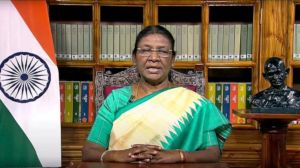Know Your City | While other Gandhian places have become museums, Rajkot’s Rashtriya Shala keeps going
Rashtriya Shala began in 1921 as Kumar Mandir, a primary school functioning out of rented premises to impart education to children in Gujarati.
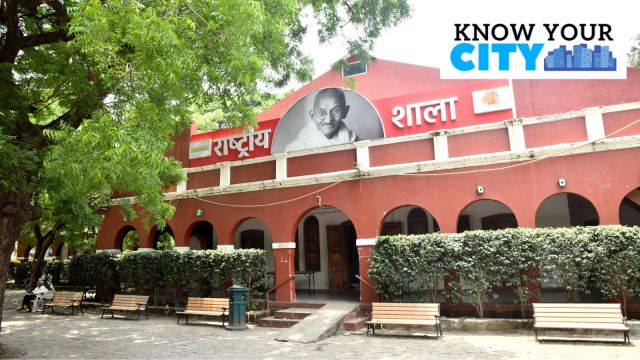 The main building of Rashtriya Shala in Rajkot. (Express photo by Chirag Chotaliya)
The main building of Rashtriya Shala in Rajkot. (Express photo by Chirag Chotaliya)Painted maroon and shaded by huge trees, the historic main building of Rashtriya Shala, where Mahatma Gandhi observed a five-day-long fast during his Rajkot Satyagraha in 1939, catches the eyes of anyone travelling along Rashtriya Shala Road in the heart of Gujarat’s Rajkot city.
The spaciousness of the 12-acre campus in an otherwise-crowded locality, as well as the multitude of activities related to education, rural employment and cottage industries going on there remind one of the space that the Gandhian way of resistance against the British rule occupied in society then and the resilience of that spirit.
According to a booklet published by Rashtriya Shala Trust (RST), which owns and manages the Rashtriya Shala campus, Gandhi gave a call for boycott of colonial education during the non-cooperation movement launched in 1920. In its place, Gandhi advocated education that could train the youth for national rejuvenation and reconstruction as well as the fight for freedom. To that end, he founded Gujarat Vidyapith in Ahmedabad and four other universities in the country. Later schools were opened elsewhere also in the same spirit. Rashtriya Shala (literally national school) was one of them.
 The historic building is where Mahatma Gandhi observed a five-day-long fast during his Rajkot Satyagraha in 1939. (Express photo by Chirag Chotaliya)
The historic building is where Mahatma Gandhi observed a five-day-long fast during his Rajkot Satyagraha in 1939. (Express photo by Chirag Chotaliya)
Rashtriya Shala started on February 2, 1921, as Kumar Mandir, a primary school functioning out of rented premises to impart education to children in their mother tongue, Gujarati. Chhotalal Lakshmishankar Mankad served as its first principal, while freedom fighters Jethalal Joshi, Jamnadas Gandhi and Vajubhai Shukla were among the teachers. A committee headed by Revashankar Zaveri and also having Jamnadas Gandhi, Mansukh Mehta and others as members was in charge. The who’s who of Rajkot enrolled their children in this school.
Sir Lakhajiraj Jadeja, the then ruler of princely state of Rajkot who was an admirer and supporter of Mahatma Gandhi, leased 13 acres of land to Rashtriya Shala at a token rent in April 1924. With the help of donors, the committee got various buildings constructed on the campus and the school shifted to its permanent campus.
Later, Nanalala Jasani was the president of Rashtriya Shala and Narandas Gandhi, son of Mahatma Gandhi’s cousin Khushalchand Gandhi, became its manager. Narandas was the secretary of the Sabarmati Ashram in Ahmedabad. But Mahatma Gandhi, while embarking on his historic Dandi March in 1930, left the Sabarmati Ashram and took a vow to not return without winning India freedom.
As per the booklet from Rashtriya Shala, on the instructions of Mahatma Gandhi, Nanrandas shifted to Rajkot to manage the school’s affairs. While Jasani and Narandas were at the helm, Rashtriya Shala decided to purchase the land on which the campus had been developed, and Dharmendrasinh Jadeja, who succeeded Sir Lakhajiraj on the throne of Rajkot state after his death in 1930, agreed. The deal was sealed on April 6, 1935. Gandhi, who had spent his formative years in Rajkot when his father Karamchand Gandhi was Rajkot’s prime minister, himself drafted the constitution of Rashtriya Shala.
Under Narandas’s leadership, Rashtriya Shala expanded its activities in the field of spinning and weaving, women empowerment, drought relief, nursery education etc. Accordingly, Balmandir, a nursery section was added to the school in 1935. The same year, a music school was started. To promote self-reliance, employment and the domestic textile industry, Rashtriya Shala started spinning and weaving activities, establishing Khadi Mandir for production and sale. An oil mill was also set up on the campus the same year.
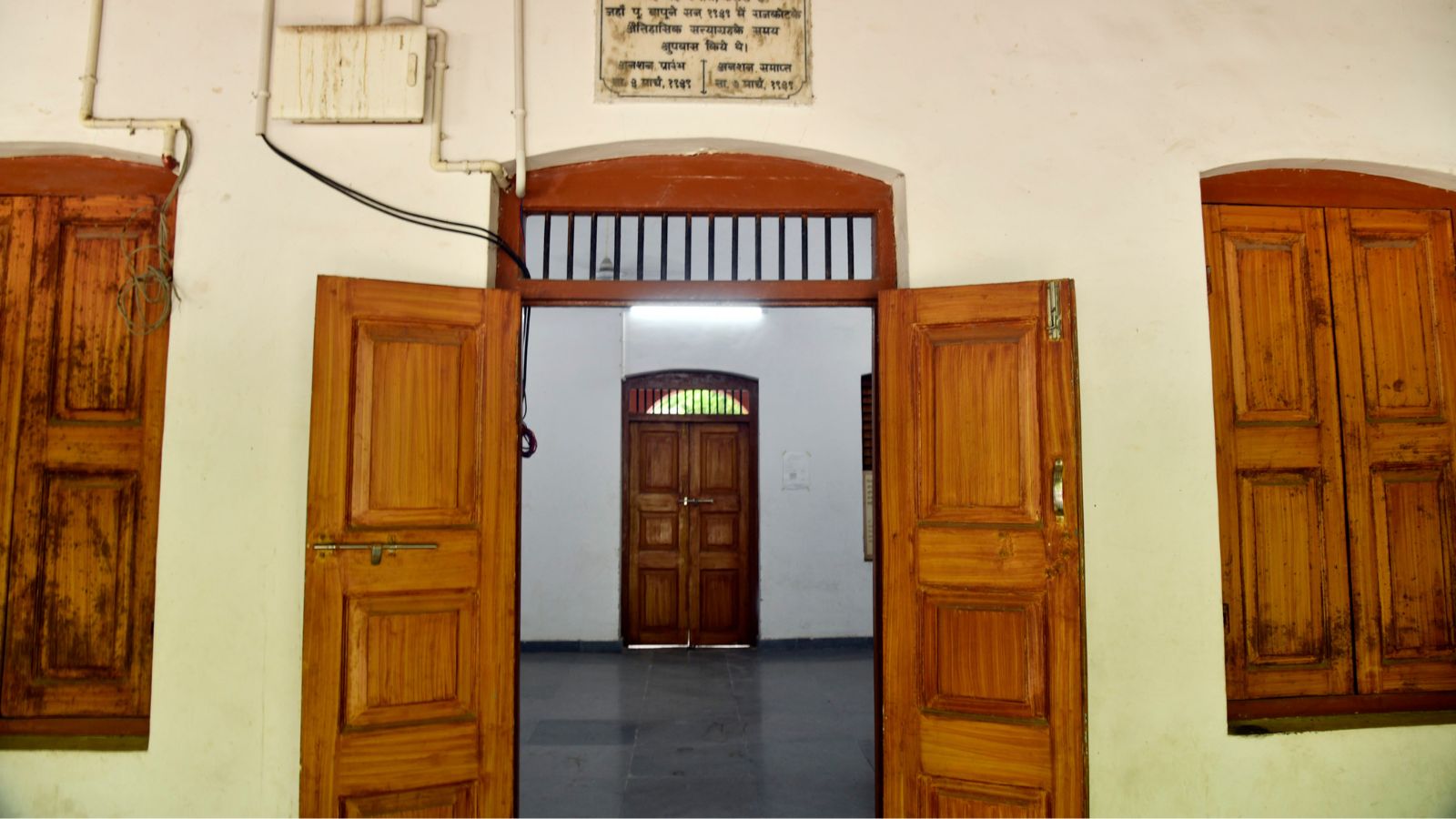 The room in Rashtriya Shala where Gandhi observed fast for five days during Rajkot Satyagraha. (Express photo by Chirag Chotaliya)
The room in Rashtriya Shala where Gandhi observed fast for five days during Rajkot Satyagraha. (Express photo by Chirag Chotaliya)
Rajkot satyagraha
However, Rashtriya Shala caught the national attention when Mahatma Gandhi began his unplanned fast-unto-death on March 3, 1939, in protest against Dharmendrasinh reneging on his promise to Praja Pratinidhi Sabha. A representative assembly established by Dharmendrasinh’s late father Sir Lakhajiraj in 1923, the Praja Pratinidhi Sabha had powers to make recommendations to the state. The convention was that the ruler rarely used to exercise his veto against such recommendations.
In his book Saurashtrama Gandhiji, freedom fighter and author Kantilal Shah writes that to support his lavish lifestyle, Dharmendrasinh started giving monopolies of match sticks, sugar, ice, etc. That led to a price rise, prompting the Praja Pratinidhi Sabha to protest. Freedom fighters such as Uchchhrangrai Dhebar and Shukla staged public protests and defied the writ of the Rajkot state, marking the beginning of the Rajkot Satyagraha. The state attempted to crush the protests by using force and arresting leaders such as Dhebar and Shukla.
To support the popular fight for people’s rights, Sardar Vallabhbhai Patel came to Rajkot and addressed a public meeting. Later he sent his daughter Maniben to Rajkot. But the state arrested her too. However, the strong-arm tactics only intensified protests. Shah writes in his book that this forced Dharmendrasinhji to seek a compromise and indirectly sought the intervention of Patel and Mahatma Gandhi. Patel came to Rajkot and after negotiations, the Thakor agreed and signed a draft agreement, promising to delegate more powers to the people. He agreed to the formation of a 10-member committee, comprising seven members recommended by Patel and three by the state. The committee was to make its recommendations within a month.
However, Shah writes in his book, under pressure from the officers of the British regime and advice from his prime minister Viravala, Dharmendrasinh rejected three of the names suggested by Patel. This led to the further intensification of protests. Leaders such as Bechar Jasani, Shukla and Joshi went on a hunger strike. Hearing about atrocities that the people of Rajkot had faced, Kasturba came to Rajkot to join the satyagraha. But she too was jailed.
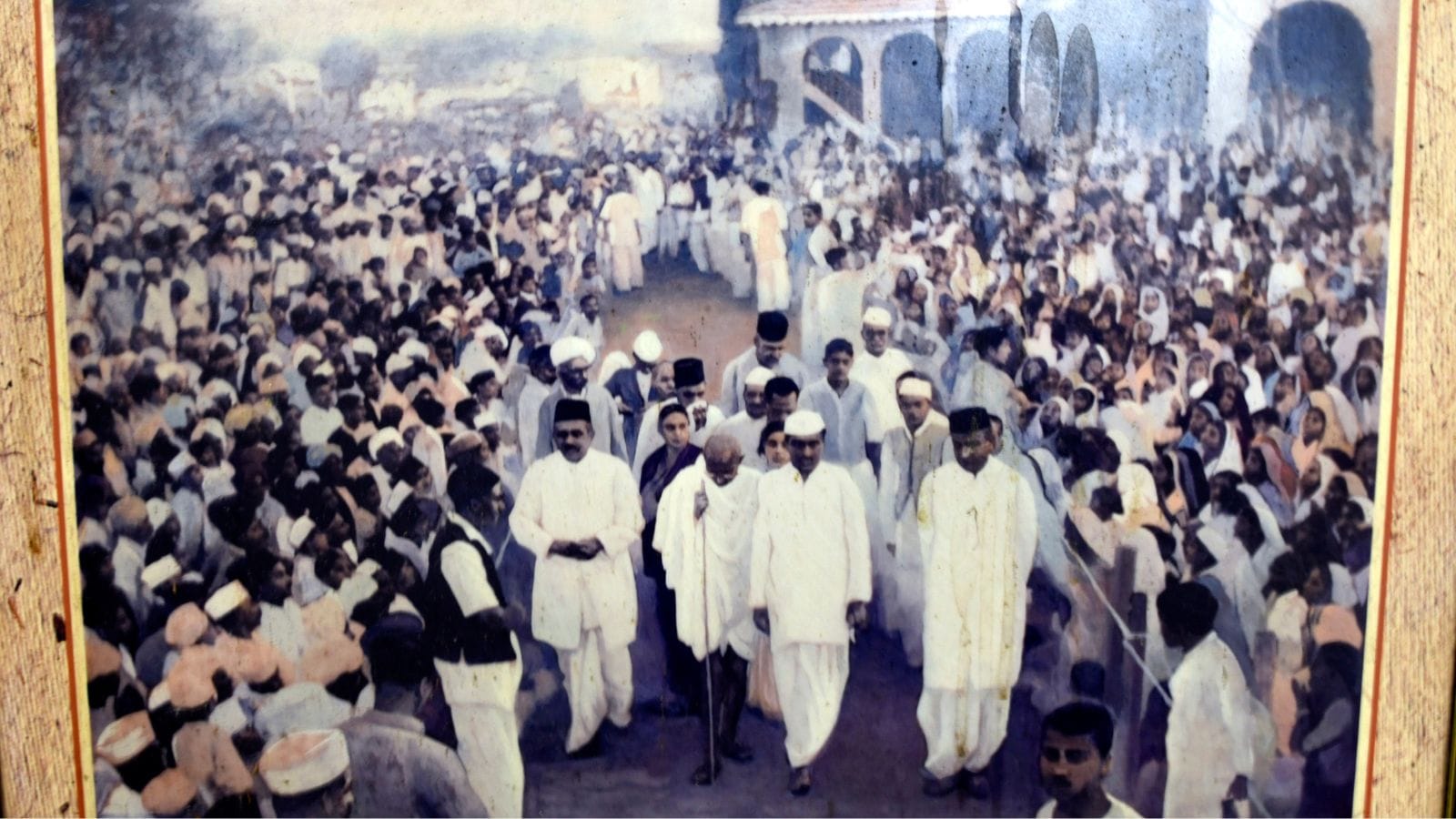 Photos in Mahatma Gandhi’s room in Rashtriya Shala, showing him threre during his hunger strike as part of Rajkot Satyagraha. (Express photo by Chirag Chotaliya)
Photos in Mahatma Gandhi’s room in Rashtriya Shala, showing him threre during his hunger strike as part of Rajkot Satyagraha. (Express photo by Chirag Chotaliya)
Mahatma Gandhi corresponded with the Rajkot state but the latter denied any atrocities. Not satisfied with replies to his letters, Gandhi came to Rajkot on February 28, 1939, put up in Rashtriya Shala and requested Dharmendrasinh to honour his promise with respect to the reforms committee.
However, the ruler and his prime minister denied any breach of promise. Through a letter on March 2, Gandhi made one final request to the ruler to honour his promise and informed the latter that he would start a hunger strike if his requests were not granted by 3 pm the next day. As he did not receive Dharmendrasinh’s response, Gandhi started his hunger strike in his room in Rashtriya Shala on March 3, 1939. But Dharmendrasinh did not budge. Eventually, Gandhi ended his hunger strike on March 7, 1939, after agreeing with the suggestion of Victor Alexander John Hope, the then governor-general of India, that the best way to resolve the situation was to approach a court.
The court ruled in favour of the people of Rajkot. Gandhi came to Rajkot and wrote to Dharmendrasinh underlining the need to form the reforms committee as directed by the British government following the court order. However, the Rajkot state did not budge. Shah writes in his book that the state instigated garasdars (estate owners) and that they took out a march with open swords, showed black flags to Gandhi, and raised slogans against him while he was in a prayer meeting at Rashtriya Shala.
Bapu Upvas Khand
Today, the room in which Gandhi went on a hunger strike is preserved as Bapu Upvas Khand. The prayer hall serves as a multipurpose hall that RST rents out for various events. The music school has around 500 students. Balmandir now provides kindergarten education in English also, besides Gujarati. The oil mill sells around Rs 60 lakh’s worth of groundnut, coconut, sesame and almond oil after extracting oil using the traditional cold-press method. A shopping mall, under the brand name Satva sells daily-use items, toiletries and beauty products manufactured by those associated with various Gandhian organisations.
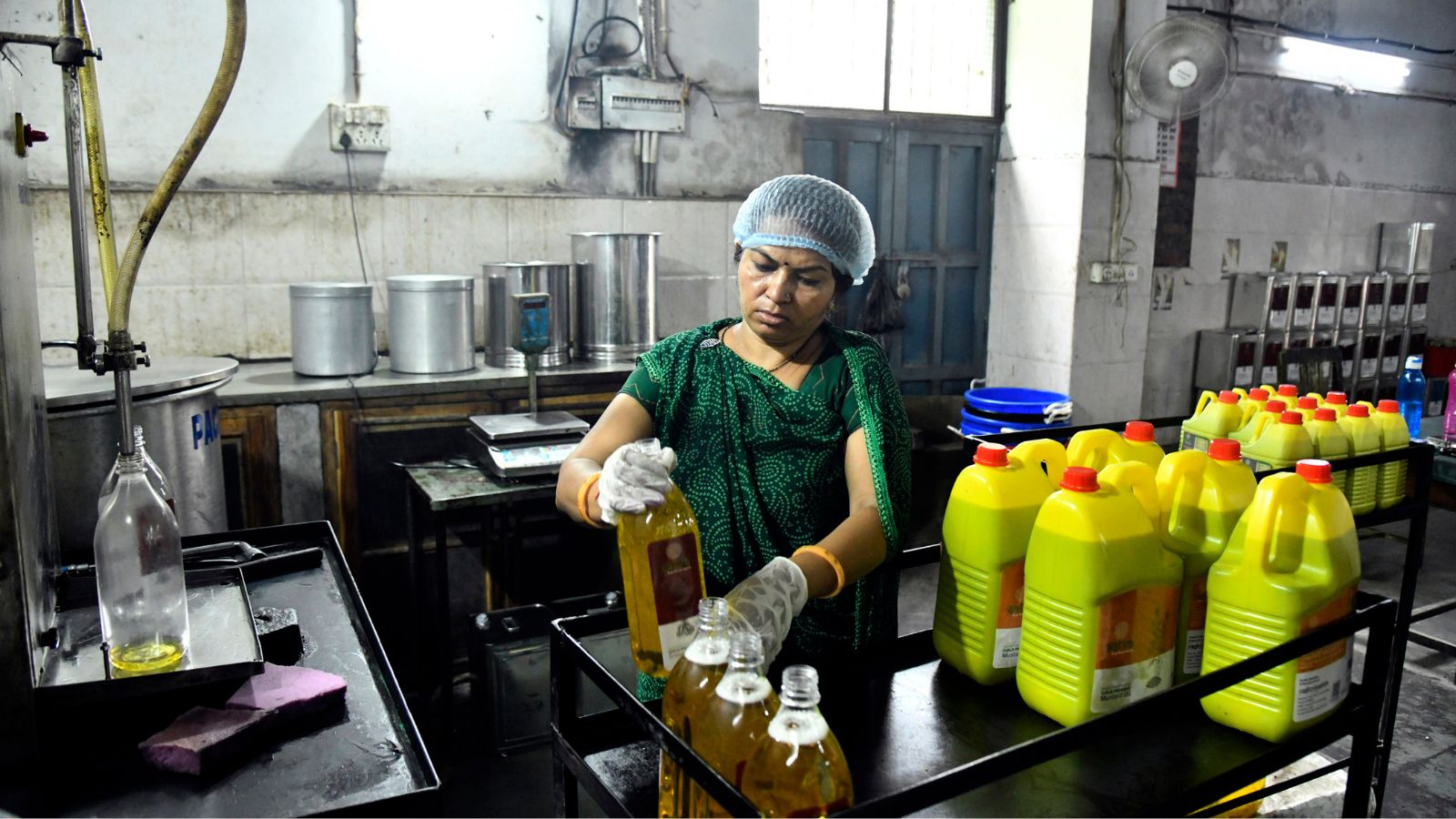 At the oil mill on the campus of Rashtriya Shala, in Rajkot. (Express photo by Chirag Chotaliya)
At the oil mill on the campus of Rashtriya Shala, in Rajkot. (Express photo by Chirag Chotaliya)
RST also founded a college in 2023, offering a Bachelor of Computer Application programme to women. A college and school run by a charitable trust from the Rashtriya Shala campus provides secondary and higher education in the arts and commerce streams. “In all, 3,500 girls are studying in various educational institutes on the campus,” says Jeetu Bhatt, secretary of the RST.
Around a dozen institutes are active on the Rashtriya Shala campus. The bevy of activities set Rashtriya Shala apart from Alfred High School and Kaba Gandhi No Delo in Rajkot and the Sabarmati and Kochrab Ashrams in Ahmedabad, which too are associated with Mahatma Gandhi but have become museums.
However, Rashtriya Shala too went through a phase of decline before rejuvenation started in recent years. The RST shut down Kumar Shala in 2018 owing to dwindling enrolment. Balmandir too had been shut for a few years for the same reason before being reopened around three years ago. The oil mill remained shut for more than a decade before its revival in 2018. Last year, it suspended khadi production. “We have a khadi inventory worth around Rs 35 lakh as sales have dipped. Bulk orders from institutional buyers are rare these days. So we had no option but to suspend production,” says Bhatt.



